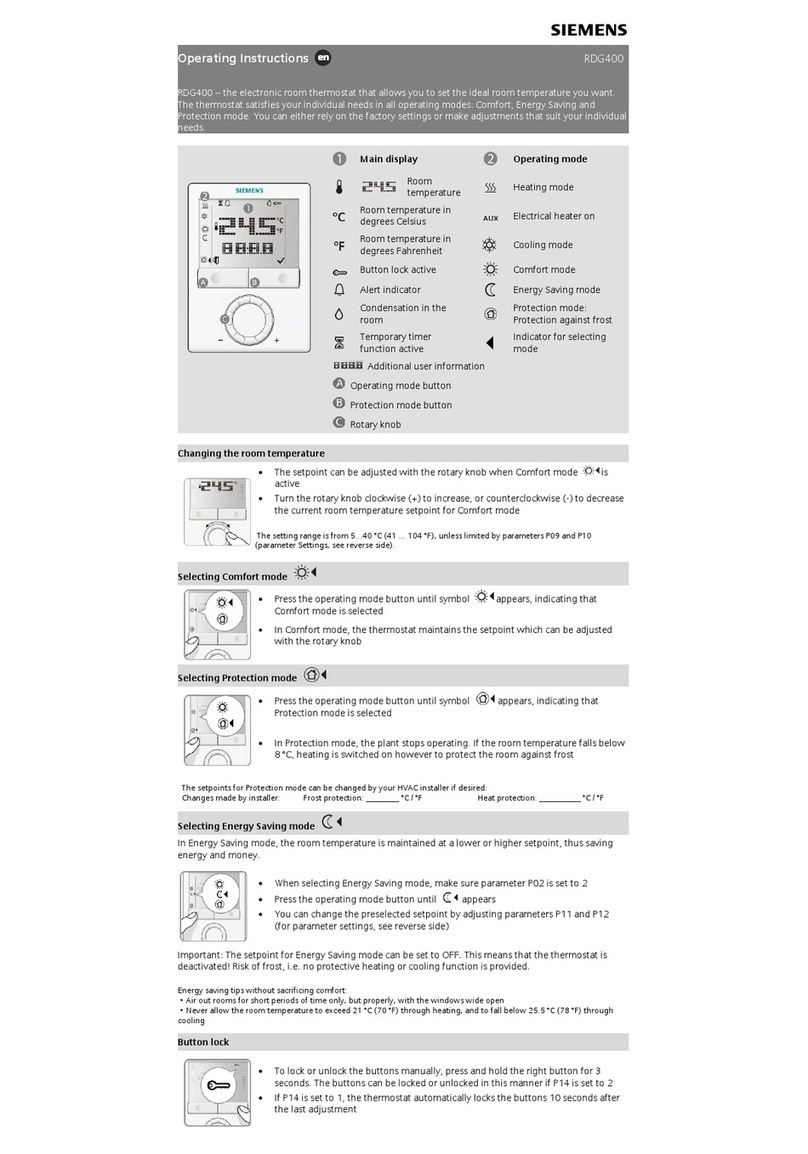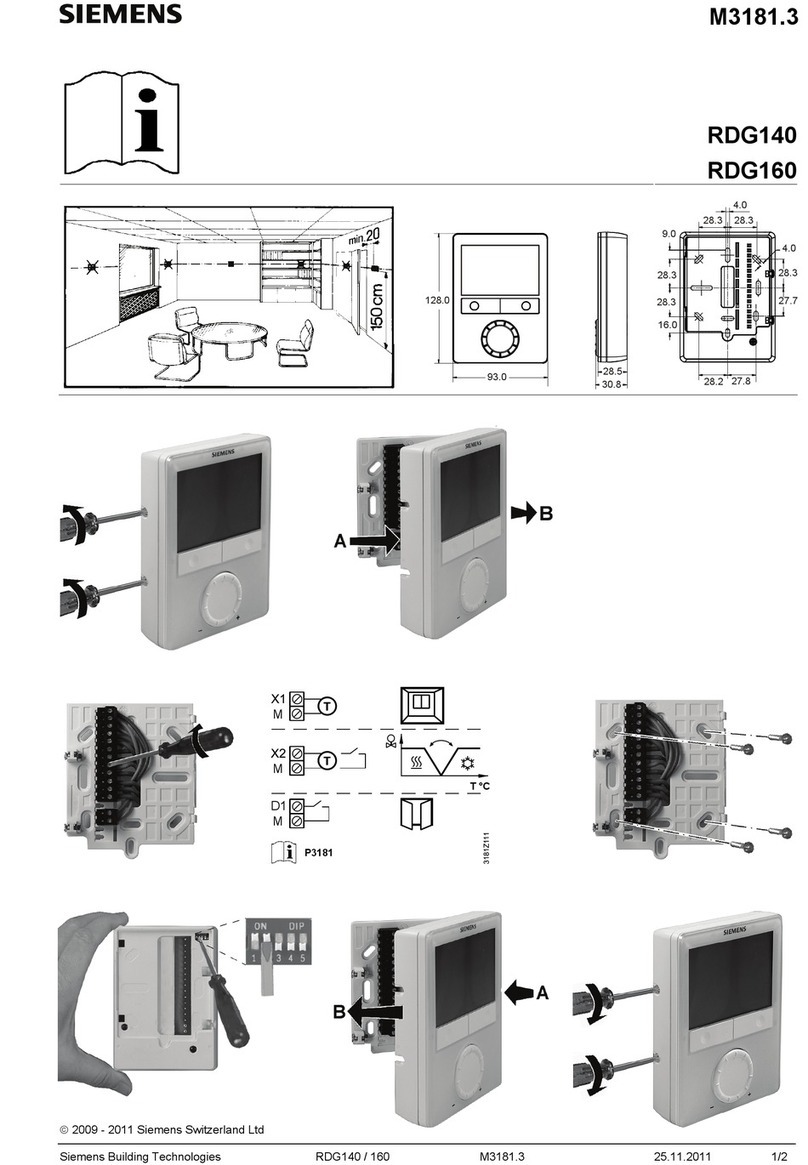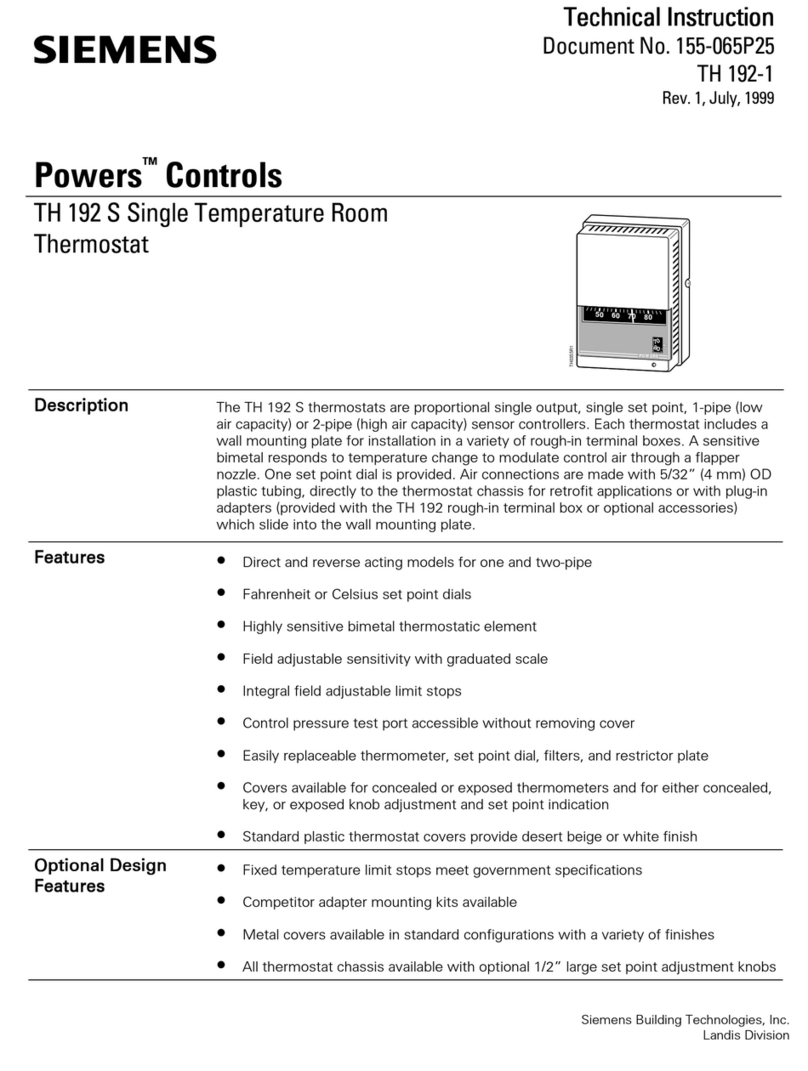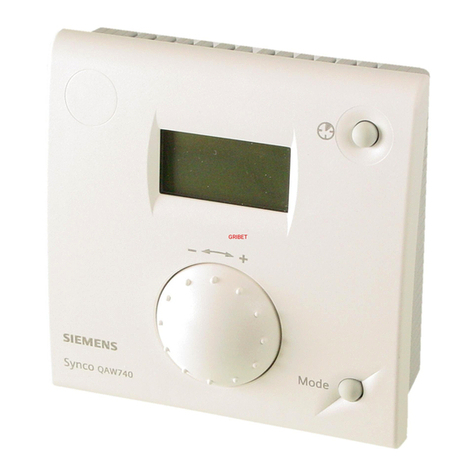Siemens EcoView User manual
Other Siemens Thermostat manuals
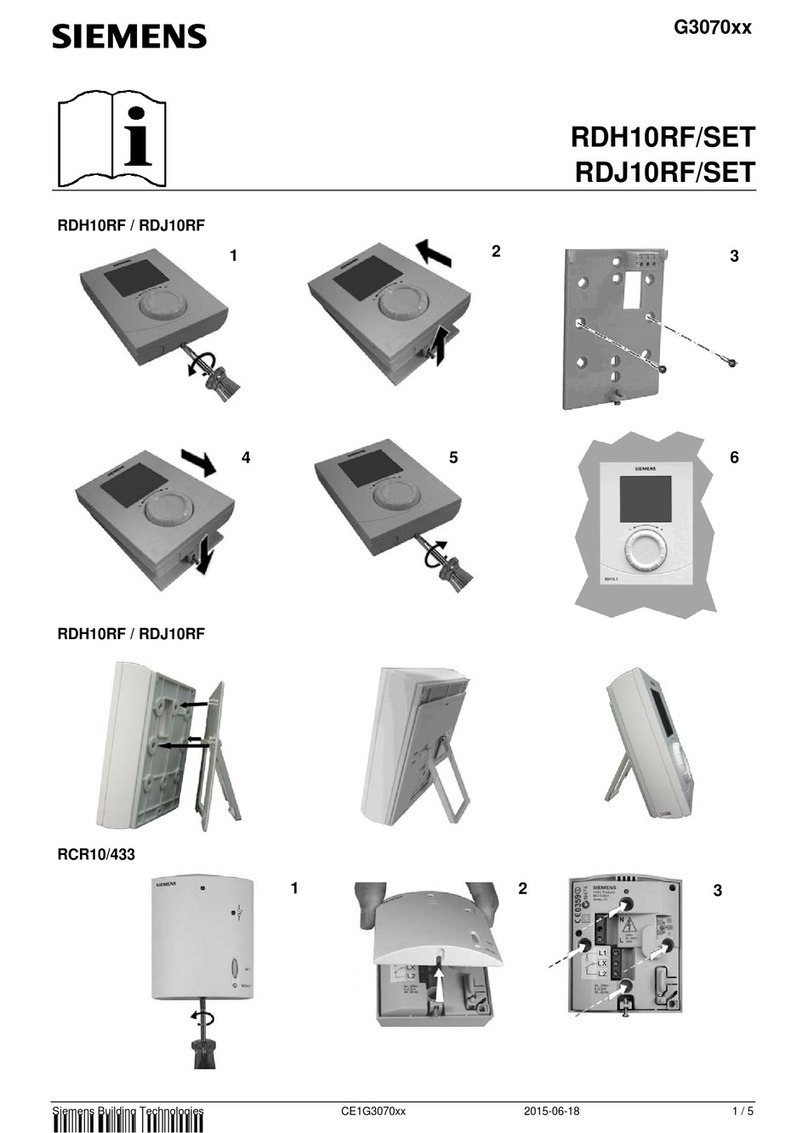
Siemens
Siemens RDH10RF Quick start guide
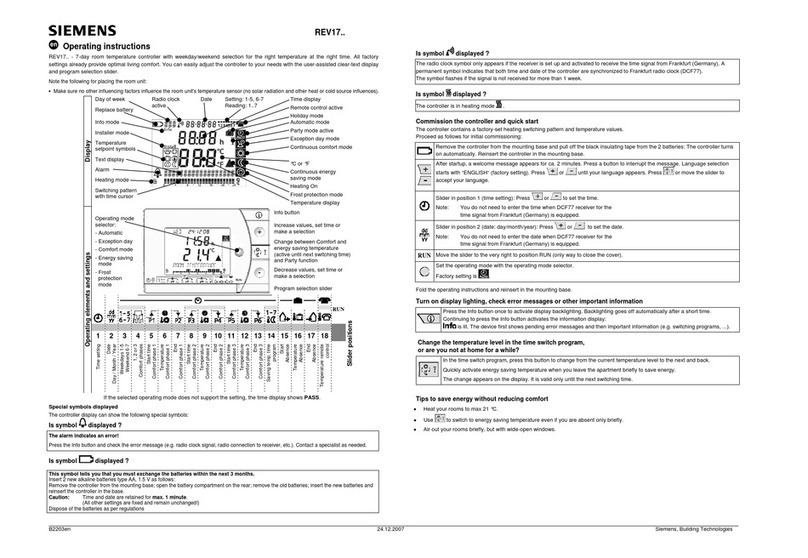
Siemens
Siemens REV17 Series User manual
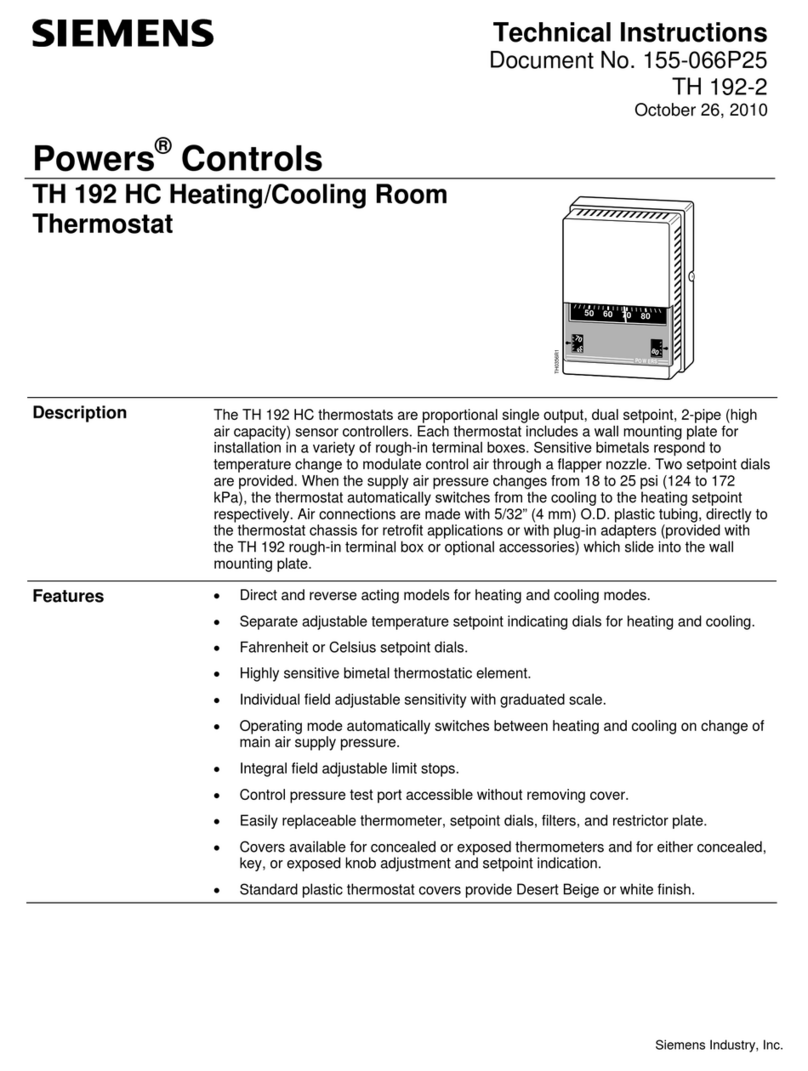
Siemens
Siemens TH 192 HC Owner's manual
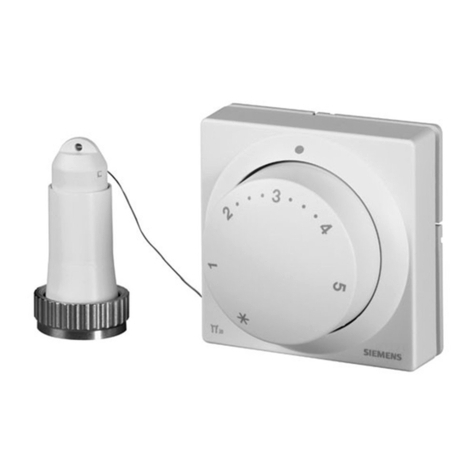
Siemens
Siemens Acvatix RTN81 User manual
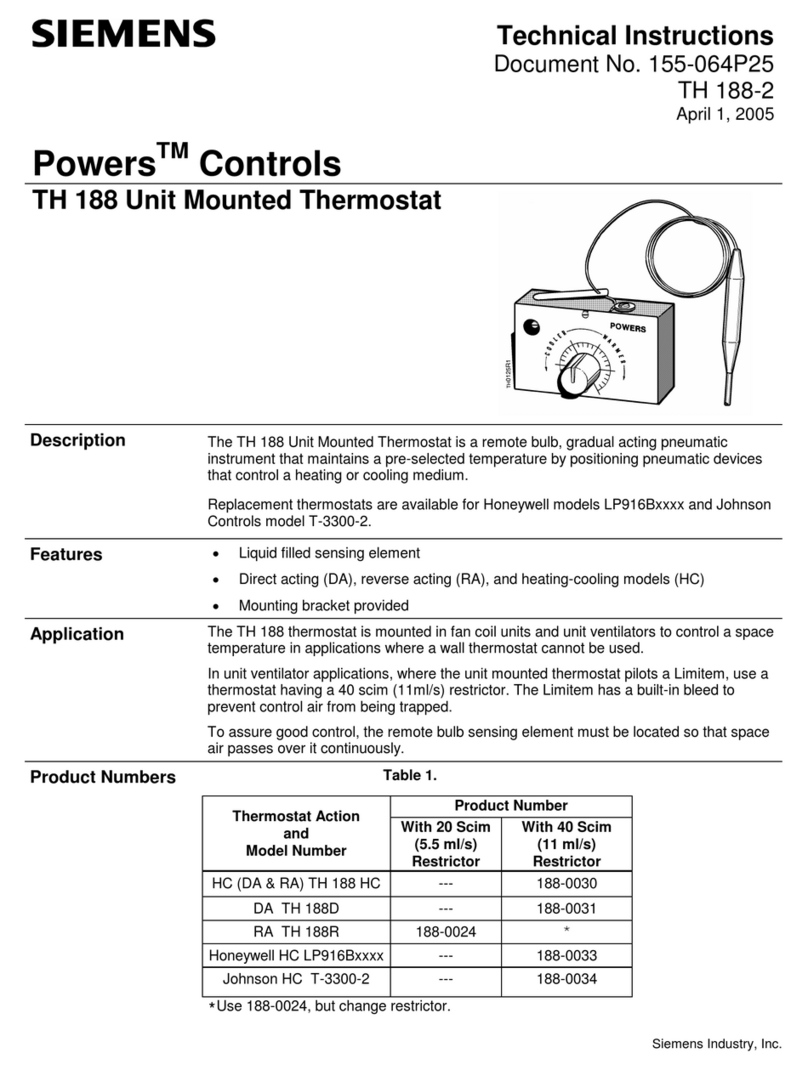
Siemens
Siemens Powers TH 188 Owner's manual
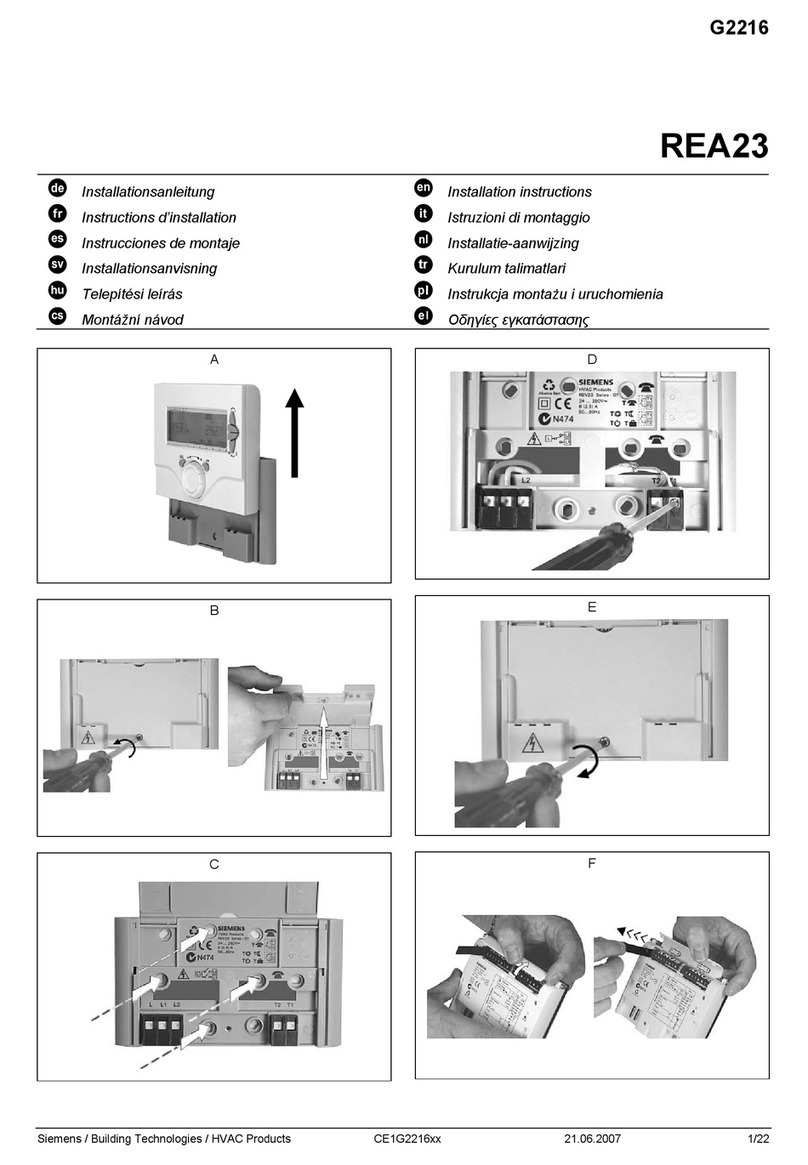
Siemens
Siemens REA23 User manual
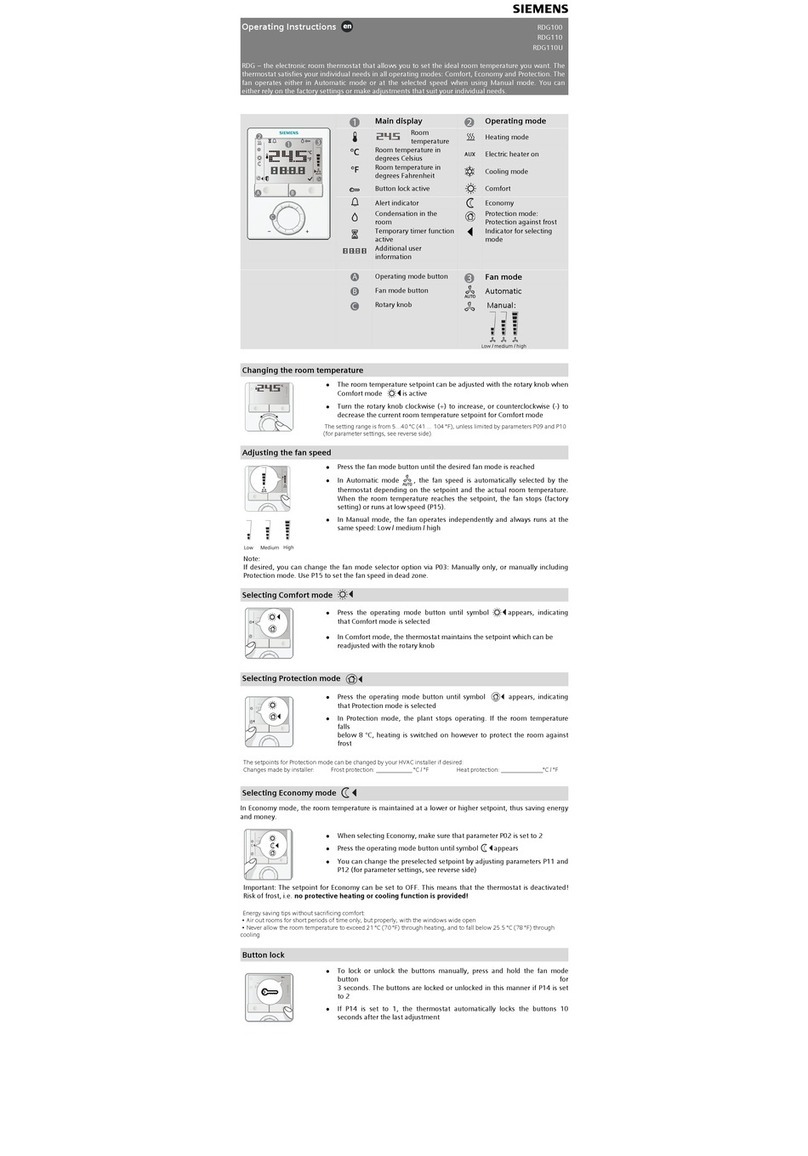
Siemens
Siemens RDG110U User manual
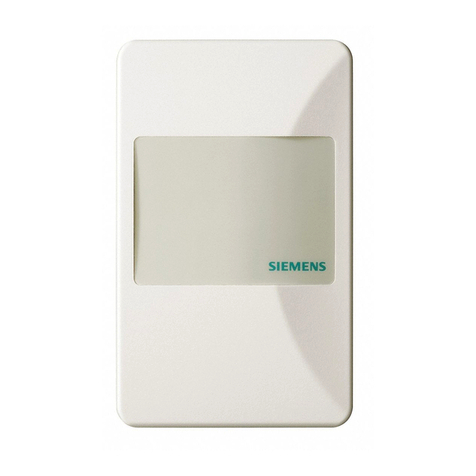
Siemens
Siemens QFA3212.FWxN User manual
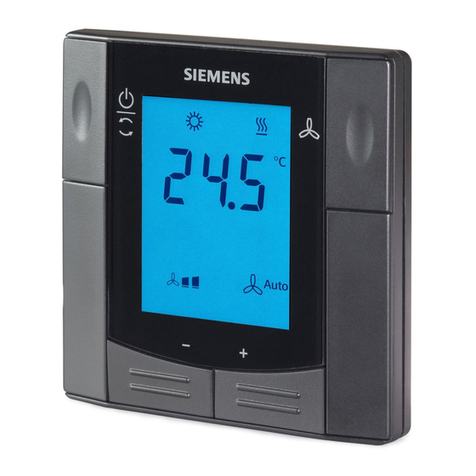
Siemens
Siemens RDF300 Series User manual

Siemens
Siemens RDS110 User manual
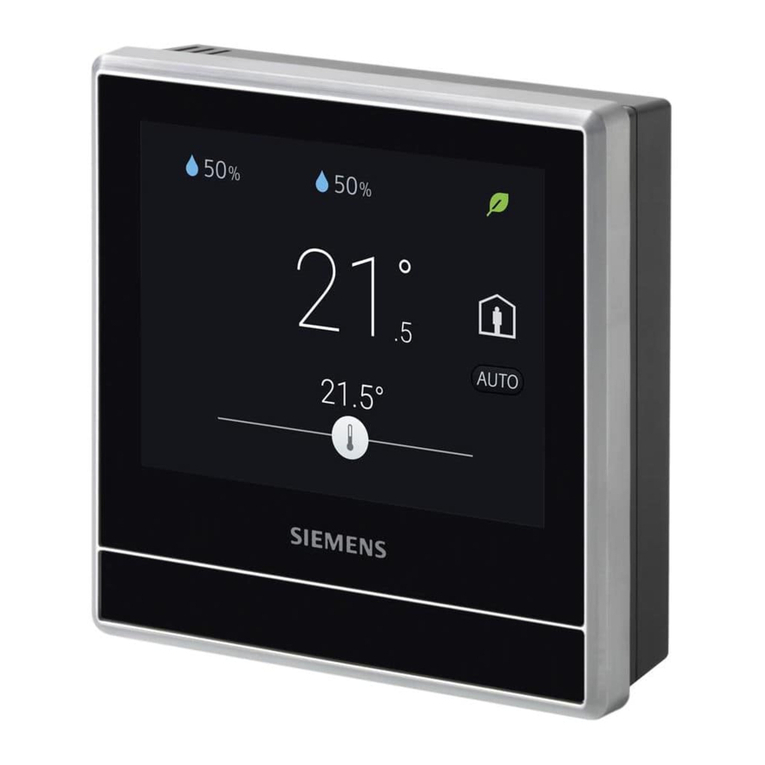
Siemens
Siemens RDS110.R User manual
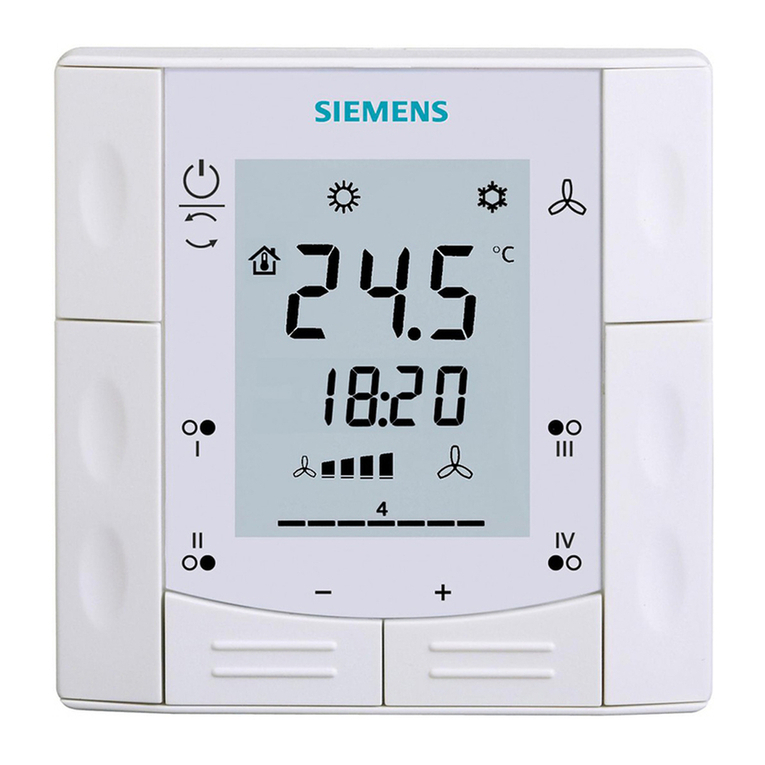
Siemens
Siemens RDF301 User manual
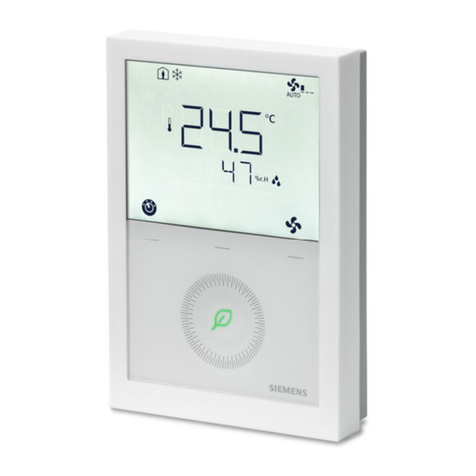
Siemens
Siemens RDG200KN Operator's manual
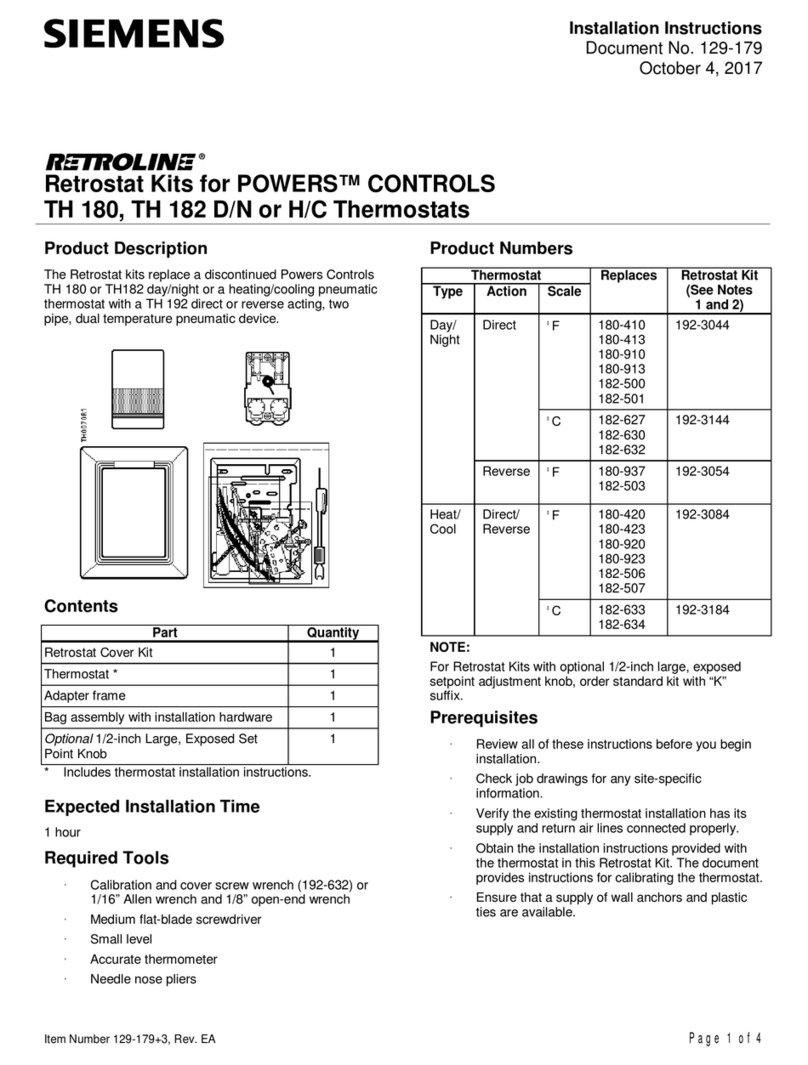
Siemens
Siemens TH 180 User manual
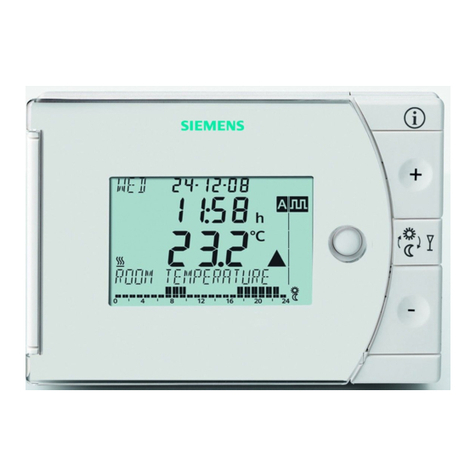
Siemens
Siemens REV17 Series User manual
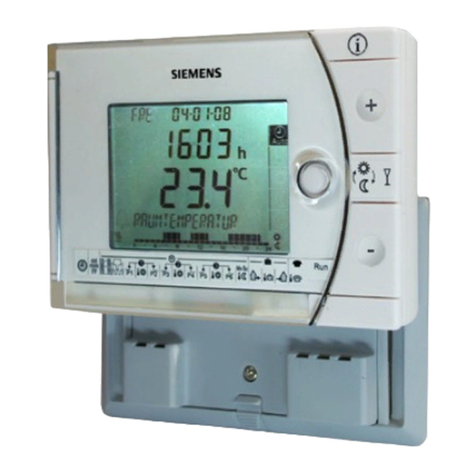
Siemens
Siemens RCR10/868 User manual
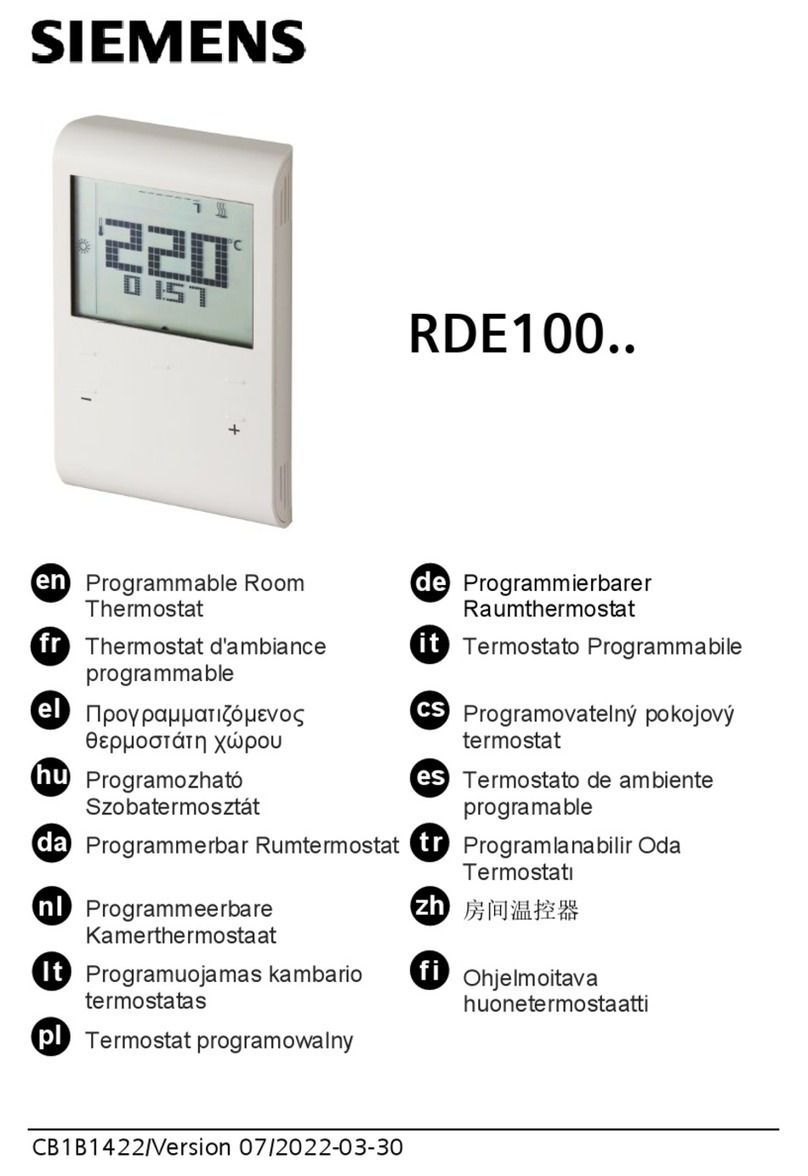
Siemens
Siemens RDE100 Series User manual
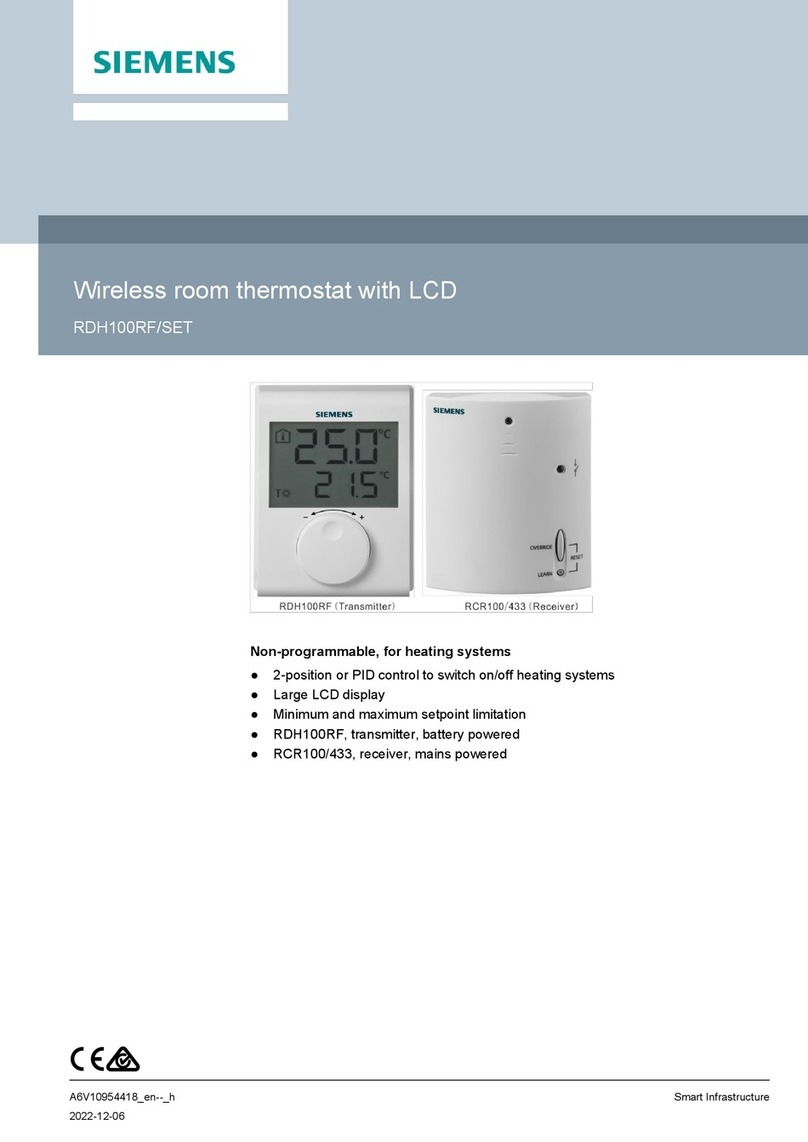
Siemens
Siemens RDH100RF/SET User manual
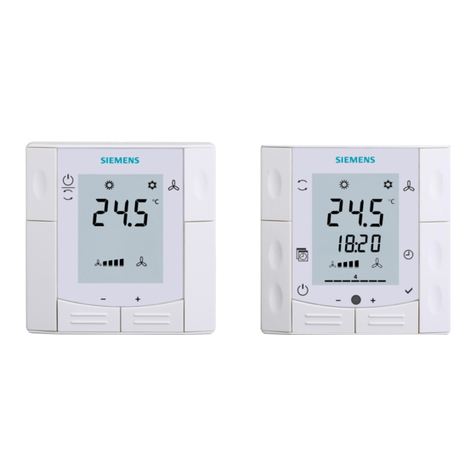
Siemens
Siemens RDF400 User manual

Siemens
Siemens Free Energy Band TH 193 HC Owner's manual
Popular Thermostat manuals by other brands

Charmeg
Charmeg MP-R user manual

dixell
dixell WING XW40LS Installing and operating instructions

Network Thermostat
Network Thermostat NetX X7C-WIFI Installation and programming manual

Radio Thermostat
Radio Thermostat CT80 Operation guide

HAI
HAI Omnistat RC-120 installation manual

Lennox
Lennox iComfort E30 Installation and setup guide

Lux Products
Lux Products PSD011Ba Installation and operating instructions

Computherm
Computherm Q20 operating instructions

Heatmiser
Heatmiser neoStat user manual

Mars
Mars HEAT CONTROLLER IR Wireless Thermostat user manual

LUX
LUX LP0511D user manual

Saswell
Saswell SAS920XWHB-7-S-RF User manual and warranty card
